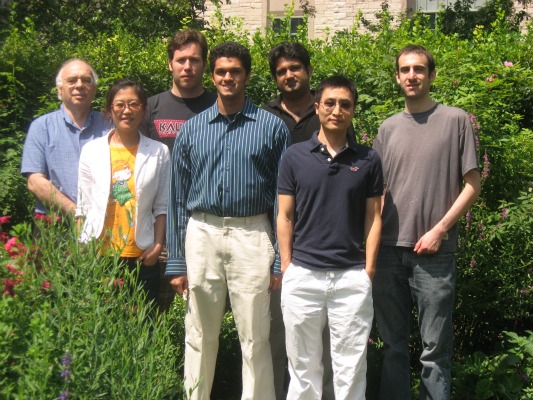Weitz Research Group

Our research employs a physical chemist’s approach to gain insights into important environmental and catalytic problems. Our work is focused on elucidating the mechanisms for two extremely important catalytic processes.
1) The photochemical reduction of carbon dioxide to fuels.
2) The selective catalytic transformation of biomass to fuels.
Though it has been demonstrated that these processes take place, process 1) currently only takes place with very low efficiency and process 2) suffers from a lack of selectivity in the production of the desired final products. These problems limit the current economic viability of both processes.
To improve the yield and efficiency of these processes it will be necessary to develop new catalysts that lead to much more efficiency for the reactions in process (1), and yield higher selectivity for the reactions involved in process (2). It is our view that it is necessary to understand the mechanisms for the reactions that lead to optimal yields and/or selectivity in processes 1 and 2 in order to identify the critical steps that control the rate of reaction and/or the selectivity of reactions. Thus, our focus is on the delineation of reaction mechanisms is these systems. To do this we use an array of powerful and, in some cases, cutting edge spectroscopic probes of reactions and catalysts.
Both of these projects are based in Centers, the Institute for Catalysis in Energy Processes (ICEP) and the Institute for Atom Efficient Chemical Transformations (IACT). As a result of the interdisciplinary nature of these Centers we collaborate with researchers who are actively involved in a revolutionary approach that we anticipate will result in the ability to design catalysts with the desired functionalities appropriately position, at the atomic level, on the catalyst surface. Our work on reaction mechanisms should allow for the rational design of such catalysts that are optimized for a given catalytic transformation. In addition, we collaborate with theoreticians we have access to and have developed state of the art approaches to the calculation of reaction pathways on surfaces. This work helps guide our experimental approaches and the feedback of our results to the theoreticians allows for calibration and optimization of their calculations approaches.
Created by Jenna Weitz and Aaron Raus